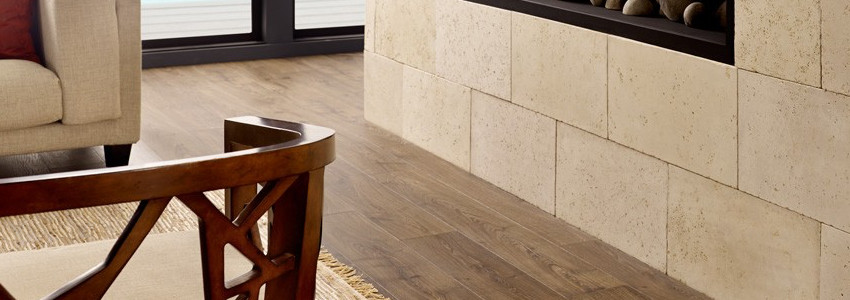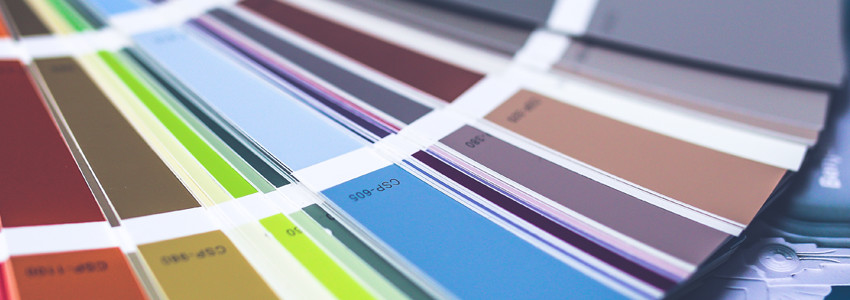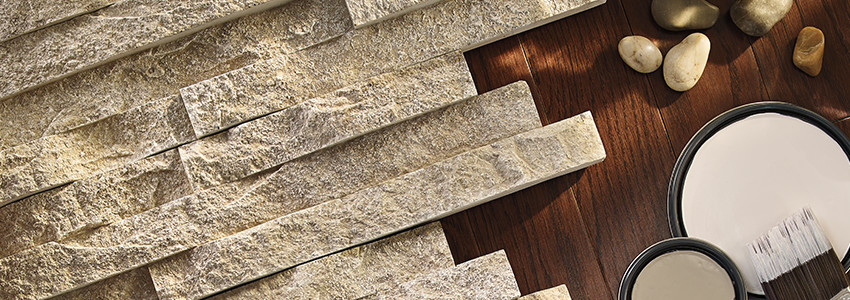As more architects and designers explore mixed styles, stone veneer has become a sought-after statement material. Aesthetically, stone speaks to permanence, history, and the natural world. It's a dramatic choice in any space, inside or out. More practically, stone veneer is simple to work with and less expensive than true stone while sacrificing none of the beauty.
Stone is also versatile. A stone accent wall or stone fireplace can just as easily add a rugged, rustic feel to a space or transform a room with very little character into a sleek and modern showpiece. Rich colors and textures, along with a natural depth and intensity, abound in the myriad varieties of stone veneer available. For every style, there is a stone that can make your interior and exterior dreams come true.
As for how to ensure that renovations involving stone veneer are successful, we've compiled three tips that can ensure a near-perfect outcome.
First, focus on accent walls and flooring

The very first thing you should do is order samples of all of the stone veneer styles that intrigue you. Contact manufacturers directly for these samples and as they arrive, bring them into the space you're renovating. Seeing them in situ (versus on the showroom floor or in project photos on sites like Houzz) will give you a feel for how they will complement your space.
Next, order your flooring samples. This is not the time to be conservative! Try different combinations you might not have considered, like a bright limestone accent wall paired with espresso planks or a stone fireplace and similarly colored tile. Play around with these pairings until you find one that speaks to you.
Next, move on to adjacent walls

If you have absolutely no idea what color or colors you'd like to see in the space you're renovating then absolutely take the time to browse Houzz, Pinterest, and your favorite home design magazines until you're inspired. But if you have a basic palette in mind then it's time to order samples. We love all the colors and eco-friendly paints at Color House, which has samples available for order right on its site.
Once the samples arrive, paint 2x2' swatches of each onto every wall. As day transitions into night, you will find that the colors you're considering take on different personalities. This is also the case as hues are highlighted by natural light or electric light. In some cases, you may find yourself more attracted to certain colors and less attracted to others at different times of day and in different qualities of light.
Whatever your preferences, this is a step that shouldn't be skipped because paint will only reveal its true character on the wall.
Finally, create a cohesive mood board

Now that you've designed a strong foundation for your update, it's time to add some style. You can begin your mood board by collecting clippings (virtual on sites like Olioboard or paper) of artwork, furnishings, and accessories that resonate with you. If you find a photo of a completed space that resembles your vision, clip that, too.
As you seek out and save inspiration you will begin to find that some colors, fabric, patterns, and themes begin to repeat themselves in your clippings. Take these and put them together to reveal your deeper preferences, and then drill down further by seeing what individual elements come together harmoniously.
It can seem like a lot of work, but remember that creating mood boards and designing your space virtually before actually buying anything is a lot more cost effective than ordering custom furniture only to realize it doesn’t go with the flooring or fit into the design of the room.
There's really no secret to achieving the home design aesthetic you want or to choosing the best stone veneer for that look. It's all a matter of experimenting and examining your options until you discover your own personal style.
Related Categories
Technically SpeakingJeff Tew
As the Director of Technical and Training, Jeff Tew is an invaluable thought leader and resource for trade professionals. With more than 25 years of career experience in Manufactured Stone Veneer (MSV), he works with masons, builders, architects, and others in the construction industry to help design and build beautiful projects. As a firm believer in MSV as one of the industry's most efficient and resilient materials, Jeff knows it can be used to define unique and captivating spaces and buildings through proper planning, detailing and testing. Drawing on his experiences as a contractor during trainings and consultations, Jeff focuses on helping pros build healthy wall systems using MSV while meeting building code requirements and working safely on residential and commercial job sites all across North America.



Let Us Know What You Thought about this Post.
Put your Comment Below.